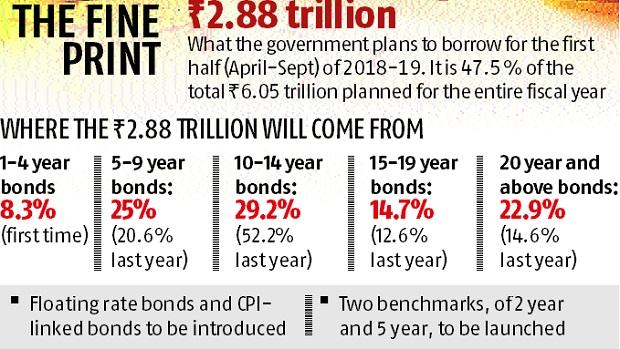7667766266
enquiry@shankarias.in
Why in news?
Union government plans to borrow Rs 2.88 trillion in FY 2018-19.
What is union government’s plan on borrowing?
How this borrowing has been planned?

What are the benefits of this move?
Source: Business Standard